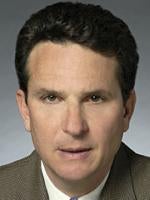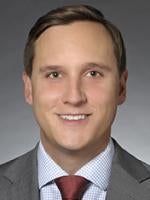On March 28, the US District Court for the District of Massachusetts held that, under the Employee Retirement Income Security Act of 1974 (ERISA), two private equity funds (1) were engaged in a trade or business, and (2) had formed a "partnership-in-fact" (which itself was engaged in a trade or business) that owned a controlling interest in a bankrupt portfolio company.[1] Since the "partnership" owned 100 percent of the bankrupt debtor, the court found the funds jointly and severally liable for the debtor's $4.5 million multiemployer pension plan "withdrawal liability" despite neither fund owning ERISA's requisite 80 percent controlling interest in the debtor.
The First Circuit Court of Appeals' Sun Capital decision had previously caused some concerns for private equity fund sponsors regarding their exposure to the unfunded pension liabilities of their portfolio companies by rejecting the common, first-line defense to pension liability; namely, that private equity funds are not engaged in a "trade or business" and thus cannot constitute a member of a portfolio company's controlled group of companies. The First Circuit held that an investment fund could engage in a trade or business under an "investment plus" standard, and remanded for other findings. The District Court, on remand, not only applied the First Circuit's "investment plus" standard to determine that the two related, yet organizationally distinct, funds were engaged in a trade or business, but also applied a new de facto partnership test for determining requisite ownership under ERISA.
As a result of these developments, private equity fund sponsors should continue to account for potential ERISA liabilities when setting purchase and financing terms for target companies contributing to underfunded multiemployer defined benefit pension plans or sponsoring single employer defined benefit pension plans with unfunded benefits.
Further, although the First Circuit explicitly stated that its findings regarding whether the funds were engaged in a "trade or business" were limited to ERISA and should not be presumed to apply for federal income tax purposes, the IRS may attempt to apply this "investment plus" standard in the income tax context despite no direct precedent currently existing for such application (and some contrary statutory concepts).
Funds should continue monitoring the developments in the Sun Capital case (including any appeal of the District Court's March 2016 decision) and the impact of the court's holdings in other circuits and in the federal income tax arena.
The ERISA Backdrop
Under ERISA, an entity may be jointly and severally liable for single employer defined benefit termination liabilities and/or multiemployer pension plan withdrawal liabilities if such entity is: (1) engaged in a "trade or business," and (2) under "common control" with the entity that is obligated to contribute to the pension plan (the "Controlled Group Test").
The Trailblazer: PBGC Appeals Board
In 2007, the Pension Benefit Guaranty Corporation Appeals Board (PBGC) determined that a purportedly passive investment vehicle could engage in a "trade or business" for purposes of the Controlled Group Test, and provided that "to be engaged in a trade or business, the taxpayer must be involved continuously and regularly with the primary purpose of producing income or profit."[2] The fund at issue before the PBGC was formed as a Delaware limited partnership, had a general partner and more than 30 independent institutional investors, and was controlled by that general partner. The general partner hired an investment manager to manage the fund's investments and, inter alia, source opportunities. Further, the fund received compensation for its services. One of the fund's investments filed for chapter 11 bankruptcy and the PBGC became trustee of the debtor's terminated pension plan. The PBGC determined the fund to be regularly involved in investment activities of a more active nature than a traditional passive investor, and, as a result, a "trade or business" for ERISA purposes.
Using its interpretive authority, the PBGC determined that it had requisite authority to adjudicate the ERISA matter in a manner contrary to the judicial definition of "trade or business" in the federal income tax context, which the fund argued "exclude[d] investment activities." Since in that case the fund owned more than 80 percent of the stock interest in the portfolio company, only the "trade or business" component of the Controlled Group Test was at issue.
While the PBGC stopped short of finding the fund's other portfolio companies jointly and severally liable for the liability on a "brother/sister" basis, it established a quasi-"investment plus" standard for determining "trade or business" status under the Controlled Group Test.
The Makings of Sun Capital
In what appeared to be a post-PBGC victory for private equity fund sponsors, the District Court of Massachusetts held in a November 9, 2012 decision that two related Sun Capital private equity funds were not liable for the withdrawal liability of their bankrupt portfolio company, and entered summary judgment for the funds, as a result of the funds not constituting "trades or businesses" under the Controlled Group Test.[3]
The Sun Capital Facts
In Sun Capital, two private equity funds, Sun Fund IV and Sun Fund III (collectively, the "Funds"), indirectly owned Scott Brass Holding Corp. ("Scott Brass") through an LLC. Sun Fund III owned 30 percent of Scott Brass and Sun Fund IV owned 70 percent of Scott Brass. Scott Brass, a bankrupt entity, was liable for approximately $4.5 million of multiemployer pension plan withdrawal liability.
Each of Sun Fund III and Sun Fund IV was organized as a limited partnership under state law. Their general partners, Sun Capital Advisors III, LP, and Sun Capital Advisors IV, LP, respectively (the "GPs"), each had a limited partner committee consisting of the two sole shareholders of Sun Capital Advisors, Inc., which made all material partnership decisions of the GPs. The GPs were obligated to make capital contributions to the Funds, but also were entitled to receive an annual management fee from the Funds. The GPs were able to waive their management fees, generating a "Waived Fee Amount," which would offset future capital contribution obligations. The Funds also were able to reduce against the management fees they owed their GPs the amount of other fees paid to the GPs, such as management fees paid by operating companies to such GPs. Any amount not offset in a current year could be carried forward to offset future management fees owed the GPs. However, the fees payable to the management entity were allocated between the two Funds based upon their indirect ownership percentages in Scott Brass (i.e., 70/30), and these allocated fees were then offset against the fees each Fund owed its GP.[4]
The First Circuit Speaks
In 2013, the First Circuit Court of Appeals reversed the District Court's 2012 decision and held one of the two Funds to have constituted a trade or business, and remanding for further determinations about (1) the trade or business status of the second of the two Funds, and (2) whether "common control" existed under the Controlled Group Test.[5] The First Circuit focused on the active management of the portfolio company's activities by the Fund's general partner pursuant to the governing fund document and the irregular economic benefit realized by the Fund in the form of management fee offsets. In somewhat parallel reasoning to the PBGC's 2007 Appeals Board decision, the First Circuit utilized an "investment plus" standard, and, given (1) the benefits the Fund received that passive investors customarily did not receive, and (2) the Fund's active management activities, found that Sun Fund IV engaged in a trade or business for purposes of the Controlled Group Test.
In the First Circuit, the Funds argued their activities did not rise to the level of a "trade or business" under the Internal Revenue Code, a phrase they asserted the US Congress meant to be a term of art with a consistent definition. The First Circuit dismissed this argument, noting that (1) the US Supreme Court had the opportunity to provide a consistent definition of "trade or business" under the tax laws and, finding that Congress had not defined the term for general application, explicitly declined to do so itself,[6] and (2) the law at issue in this case was ERISA, not the Code, and outside of specific cross-references, definitions for tax law need not control for ERISA. Therefore, even with precedent in the tax law context that could cut the other way, the First Circuit did not find it very difficult to hold that the activities of the Funds could constitute a trade or business under ERISA.[7]
The District Court Follows Suit
In the District Court's March 28 decision, the court held the two Funds jointly and severally liable for the amounts owed to the multiemployer pension plan because the Funds satisfied both prongs of the Controlled Group Test. In following the First Circuit's "investment plus" analysis, it found that the Funds did satisfy the "plus" standard as a result of the Funds' active involvement in management and receipt of benefits, like management fee offsets, which were not available to ordinary passive investors. Moreover, the court found that although organizationally separate, the Funds' similar operations, identical governing provisions, centralized control by two individuals and lack of independence resulted in a "partnership-in-fact" (which itself was held to be engaged in a trade or business) and aggregation of the Funds' ownership interests for purposes of meeting the ownership component of the Controlled Group Test. This holding is instructive given that neither Fund owned the requisite 80 percent required to satisfy the ownership component of the Controlled Group Test.[8] In finding that trades or businesses under common control with the debtor existed, the District Court stated that the Multiemployer Pension Plan Amendments Act of 1980 (MPPAA) "anticipates disregarding business entity formalities and preventing responsible parties from contracting around withdrawal liability."
The Sun Capital Funds had formed a limited liability company, Sun Scott Brass, LLC (the "LLC"), to passively invest in Scott Brass, and believed that this form should control. However, the District Court noted that, under the federal income tax laws, state law organization is merely one factor to consider in determining the character of a business venture, rather than a dispositive factor. Instead, the court found that, while the two Funds had not formed a broad general partnership encompassing all of their investments, the Funds had formed a partnership or joint venture more limited in scope, which encompassed, at a minimum, Scott Brass.
The court held that, if the partnership existed, it would have complete ownership of the LLC, be commonly controlled with Scott Brass, and, if also a trade or business, pass withdrawal liability onto the Funds as partners.
In finding that there was a partnership-in-fact between the two Funds, under the factors typically relied upon in the federal income tax context, the District Court relied on the existence of coordination and joint activity between the two Funds prior to the formation of the LLC and investment in Scott Brass. Factors that the District Court found important included the joint decision of the two Funds to invest in Scott Brass and the decision of the Funds to split their ownership 70/30. Three reasons were provided for the split: (1) the relative place of the two Funds in their investment cycles, (2) the desire for income diversification, and (3) the desire to avoid 80 percent ownership and the potential for associated withdrawal liability. The reasons relating to investment cycles and the specific avoidance of 80 percent ownership did not, in the District Court's view, point to the independent action of two separate funds, but to the top-down coordination of responsibilities among two funds with an "identity of interest and unity of decision making." That coordination, with no evidence of disagreement between the two Funds regarding operational decisions, pointed towards a partnership-in-fact which sat above the LLC; it was what the District Court referred to as "a site of joining together and forming a community of interest." It was this partnership-in-fact that sought out portfolio companies for investment and decided to form the LLC as an investment vehicle; the District Court found it to be separate from the LLC due to the activities attributed to the partnership which were undertaken prior to the formation of the LLC or outside the LLC after its formation. The existence of this partnership allowed the District Court to aggregate the ownership interests of the two Funds and find that the requisite level of common control existed, resulting in the imposition of withdrawal liability on the Funds.
Possible Implications
As in other successor or controlled group liability contexts, private equity funds may wish to factor into their pricing models the potential for withdrawal (and, similarly, PBGC single-employer defined benefit pension) liabilities for plans sponsored or contributed to by a portfolio company and the impact of the Court's decision in various transaction and financing documentation.
In light of Sun Capital, private equity funds should continue to monitor how holdings like these (and any resulting appeals) are received or rejected by circuits beyond the First Circuit.
It is possible, too, that if the IRS were successfully to apply this "investment plus" standard beyond its current ERISA-specific context to the federal income tax more broadly, even in the absence of direct precedent for such application, then it could result in the characterization of income received from the private equity fund as income from an active trade or business.
[1] Sun Capital Partners III LP v. New England Teamsters & Trucking Industry Pension Fund, No. 10-10921-DPW (D. Mass. Mar. 28, 2016).
[2] PBGC Appeals Board Decision, dated September 26, 2007. See also Commissioner v. Groetzinger, 480 U.S. 23 (1987)
[3] Sun Capital Partners III LP v. New England Teamsters & Trucking Industry Pension Fund, 903 F. Supp. 2d 107 (D. Mass. 2012).
[4] Sun Fund IV attempted to argue that it had received no benefit because its GP had elected to waive its fee in each of the years at issue, requiring the Fund to carry forward its offset amount, but the District Court found that there was some benefit to the amount that had been carried forward.
[5] Sun Capital Partners III LP v. New England Teamsters & Trucking Industry Pension Fund, 724 F.3d 129 (1st Cir. 2013), cert. denied, 134 S. Ct. 1492 (2014).
[6] See Groetzinger, 480 U.S. at 27.
[7] See Higgins v. Commissioner, 312 U.S. 212 (1941), Whipple v. Commissioner, 373 U.S. 193 (1963). The First Circuit also stated that its "investment plus" test was not inconsistent with Higgins, which held that managing one's estate was not a trade or business, or Whipple, which held that providing significant managerial services to multiple corporations one organized and owned was not a trade or business where the taxpayer received no compensation directly for such work beyond what any other investor would have received. The plus in "investment plus" is meant to encompass additional compensation.
[8] This view was also expressed in at least one earlier district court case in Michigan. Board of Trustees Sheet Metal Workers' Nat'l Pension Fund v. Palladium Equity Partners, LLC, 722 F. Supp. 2d 854 (E.D. Mich. 2010). Although Palladium was merely a proceduralruling (a denial of a motion for summary judgment) and did not reach a substantive legal conclusion on this point, the decision suggests the court's view that the two funds in that case could be viewed as one fund despite neither fund owning the requisite 80 percent.





 i
i


